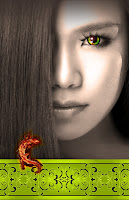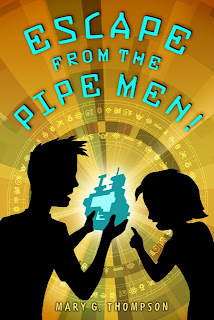We have another launch, of the more tradition book variety. P.J. Hoover's SOLSTICE hit shelves this month, and she has a blow out party to celebrate! Man, I wish I could have been there.
And in just five short weeks, we have another Inkie book launch: Dawn Metcalf's INDELIBLE! For now, we have this amazing trailer:
In celebration, Dawn is running a battery of contests including a giveaway of an annotated, cartoon illustrated copy of Indelible arc to celebrate the book trailer launch, a Show Me Your Ink contest for temp tattoos and downloadbale surprise, and Win A Shiny Copy of Indelible contest. Not enough? Well, there's also a Goodreads Giveaway going on via Harlequin Teen.
In addition to all the wonderful Inkie books out there, we've had another just announced! From Publisher's Marketplace:
Martina Boone¹s Southern gothic trilogy‹with a dash of magic‹following Barrie, a teen sent to live with her dead mother¹s twin on a decaying plantation where she discovers a centuries-old feud and dark secrets that require making peace with the local spirits, who may not be as welcoming as the sunlit boy who steals Barrie's heart, to Annette Pollert at Simon Pulse in a pre-empt by Kent Wolf at Lippincott Massie McQuilkin (World).YAY MARTINA!!! To celebrate, she's got her Friday Giveaway over at Adventures in YA & Children's Publishing, so be sure to check it out!
No joke, we've got a metric ton of book cover reveals today! Let's start with Leah Cypess's DEATHSWORN!
RIGHT? HOW AWESOME IS THAT?????
And if her awesome new cover isn't enough, her Nightspell prequel e-novella, BURIED ABOVE GROUND will be published on July 2 by HarperImpulse, selling for $1.99 on all platforms.''
Here's the summary from the publisher:
"In the kingdom of Ghostland, every murdered soul comes back as a ghost, and every ghost has only one desire—vengeance. Emilie had everything she’d ever wanted—beautiful dresses, a perfectly decorated room, a party every night, and the eye of a nobleman. But then she’s killed. And now she’ll stop at nothing to find out who did it. No one in the palace of Ghostland is above suspicion—not even the people closest to her. This haunting fantasy novella is filled with supernatural thrills and surprising plot twists.HarperTeen Impulse is a digital imprint focused on young adult short stories and novellas, with new releases the first Tuesday of each month.
And we have YET ANOTHER cover reveal! It's for THE SHADOW THRONE, the third book in Jennifer Nielsen's acclaimed Ascendance series, on sale March 1, 2014!
Speaking of the Ascendance series, THE FALSE PRINCE, Book 1in the series, is a finalist for YALSA's Teen Top Ten List. Voting will take place this fall. Also, James Patterson lists THE FALSE PRINCE as one of his summer reading recommendations for Barnes & Noble. How cool is that?
Adding to the list of "things that are cool," Nancy Holder also has a new story out in the world, this time in THE LIVING DEAD anthology from Orbit, UK.
Here's how she described her story to me:
Zombie gets crucified during the Oberammergau Passion Play. God is displeased. Black Plague ensues.Must read. Must read now.
Phew, I think that's it! What a wacky week of wondefulness, yes? Yes.























